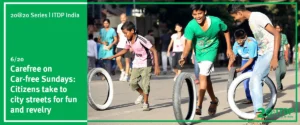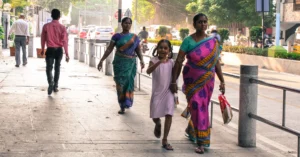Why Delhi chose to go the BRT way
By 2004, the Delhi population was caught in the upswing of urban migration and public transport woes — with the “Killer Blueline” buses on a rampage. It was also when experts had assembled to conceive the Delhi BRT system. A high-quality bus-based transit system, it aimed to deliver fast, comfortable, and affordable services at metro-level capacities.
Worldover successful BRT systems were set up with segregated lanes, stations typically aligned to the center of the road, off-board fare collection, and fast and frequent operations. The Delhi BRT network, however, met some but overlooked most of these benchmarks. This disregard and ensuing public outcry led to its failure and demise.
Here’s a look at what went wrong and why the discourse surrounding the Delhi BRT needs a tone check.
Losing face: media and public outcry
One of the point of contention against the Delhi BRT, among Delhi commuters, was the soaring travel time. But it was found that commute hours for BRT users saw a significant drop of 40%. The project affected motorists and it is these voices that rang louder in echo chambers created by media outlets.
This was followed by court cases which sought entry of cars to the bus-only lanes, contesting the value of “wealth creators” with that of bus users. In 2012, the Delhi High Court quashed the plea, quoting Bogota Mayor Enrique Peñalosa, “A developed country is not one where the poor own cars. It is one where the rich use public transport.”
The verdict wasn’t enough to calm the clamour for scrapping the initiative. The case offered insight to how misinformed media reports were able to pushback on a “basic” BRT setup, while throttling bus transit.
From BRT bus-only lane to free-for-all lane
To begin with, there were never dedicated BRT buses for the BRT bus lanes. So low-floor buses were brought in haphazardly to fill in this void. After resolving the initial confusion regarding the operation of the lanes, they were thrown open to buses of all sizes, utility, and forms. This led to congestion and bus bunching, as many of these poorly maintained buses would either breakdown or stall the low-floor “BRT buses”.
Even so, the Delhi BRT managed to carry 12,000 passengers per hour per direction, albeit at a grinding speed of 13 km/hr. An indication that the transit system was doing its job but lane congestion was clearly hindering its performance.







